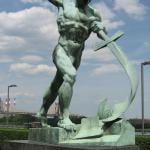For the next few days I am going to introduce you to a book that I’ve found to be a great resource. It’s called Hidden Worldviews: Eight Cultural Stories that Shape our Lives, by Wilkens and Sanford. The rest of the series can be read here.
 The ninth chapter deals with the final hidden worldview: salvation by therapy. The authors observe that therapy has become the catch all for any problems that people face. Whether the death of a loved one, relationship problems, or personal anxiety, therapy has become the atmosphere for transformation and the climate for the hope of liberation. Something that should concern Christians is that “salvation by therapy reduces spiritual problems out of existence by defining them as exclusively psychological in nature” (163). After giving a brief history of the four major schools of thought, the authors transition into a section that affirms the good in therapy. They rightly note that “every human activity, individual and corporate, has a psychological dimension, and understanding the psychological dynamics of any such activity provides insight” (175). The risk is that reductionism can rule out the spiritual components of persons and problems and thus exclude them from the healing community of the people of God.
The ninth chapter deals with the final hidden worldview: salvation by therapy. The authors observe that therapy has become the catch all for any problems that people face. Whether the death of a loved one, relationship problems, or personal anxiety, therapy has become the atmosphere for transformation and the climate for the hope of liberation. Something that should concern Christians is that “salvation by therapy reduces spiritual problems out of existence by defining them as exclusively psychological in nature” (163). After giving a brief history of the four major schools of thought, the authors transition into a section that affirms the good in therapy. They rightly note that “every human activity, individual and corporate, has a psychological dimension, and understanding the psychological dynamics of any such activity provides insight” (175). The risk is that reductionism can rule out the spiritual components of persons and problems and thus exclude them from the healing community of the people of God.
The tenth chapter moves from the hidden worldviews into the grand story of God that ought to shape the stories the people of God live into. In order to do this, they see the Bible as a five-act play. The first act as creation, the second as fall, the third as covenant, the fourth as incarnation, and the fifth as redemption. The authors did a decent job of telling the story, although I felt that it was lacking in especially the fifth act. This act climaxes in the reunion of heaven and earth when the groaning of creation will be liberated (Romans 8.18-16). This bookend of the story only gets alluded to in passing, and I think a strong understanding of the Christian worldview must be informed with where God is taking the cosmic narrative. If God intend the cosmos to be a certain way in the future, then that shapes the identity and values that shape our story and motivate proper morals and actions. In short, I think the authors do well to point readers to the narrative of the Scriptures, but they would have done well to utilize the reflections of N.T. Wright who is known for making this sort of hermeneutic accessible.
In the final chapter the authors give some tools for developing a properly Christian worldview. They helpfully utilize the Wesleyan Quadrilateral: Scripture, Tradition, Reason, and Experience. The goal of my paper will be, in part, to develop part of the worldview that relates to popular culture and science in a way that is less antagonistic.
I really enjoyed the book overall! I highly recommend it for anyone wanting to go deeper into issues of worldview!











